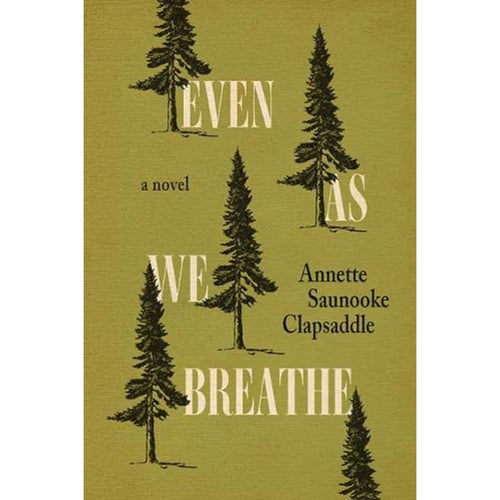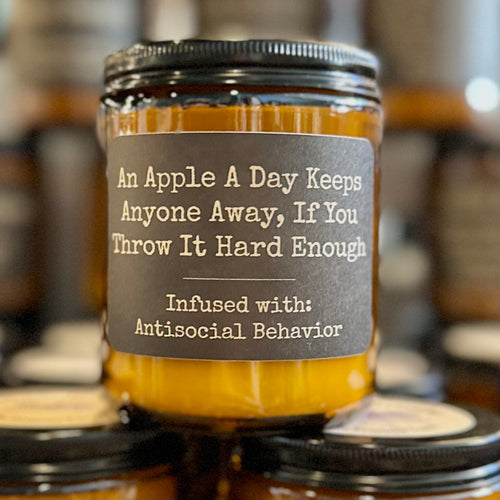
Elaine McMillion is chief among them. A young filmmaker who now lives in Boston, she visited home last August and ended up in McDowell County, which has lost more of its population due to mine closures than any other county in the state. She says, "I walked around with my jaw almost hitting the ground; seeing the town with empty storefronts and boarded up doors is extremely saddening, and in some ways infuriating."
McDowell's population began declining about 60 years ago. Since then, the population has dropped by about 80,000 people, leaving behind miles of empty homes and businesses.
There's a hollowness to the place, and it was this absence that moved Elaine to do something. As a filmmaker, she knows how to shoot footage and edit it, so she decided to try to ignite interest in this struggling community through film.
As a West Virginia native, however, Elaine knew better than to do like other filmmakers might--swoop into McDowell County with a camera crew and a predetermined storyline about coal pulling out, towns dying, and all the locals getting hooked on OxyContin. That would have been too easy and inaccurate, and worst of all, it would have painted a hopeless picture for the county. Elaine says, "I have a lot of hope for McDowell."
[caption id="attachment_5529" align="alignleft" width="191"]
 Ed Shephard says that he lives in a "damned ghost town."[/caption]
Ed Shephard says that he lives in a "damned ghost town."[/caption]Instead, she put the power of filmmaking directly in the hands of McDowell natives. Starting this summer, Hollow will be shot in large part by folks who live in McDowell. They will use the crews' cameras to share images from their own lives. What's more, Elaine and her team aren't going in with a pre-scripted scenario. They're asking residents, "What do you think can help McDowell," and leaving it to them to come up with answers.
In filmmaking, this is unusual and a little risky. Elaine took time last week to talk with me about giving up control along with the heartbreak and wonder she's found in West Virginia's southernmost county.
TR: Elaine, thank you so much for taking the time to talk. You've already shot some beautiful interviews with people in McDowell County. They seem just heartbroken about the slow death of their towns, and in the footage, the towns really do look deserted. What happened? Why did the coal company pull out?
EM: The towns are part of a “boom & bust” economy. By the mid-20th century, McDowell was one of the richest counties in the United States and was known as “the nation’s coal bin.” Immigrants flooded in from overseas and African Americans came from the South. The county's population soared, but a combination of decreased demand for coal and mechanization of mining minimized the number of jobs.
In 1986, more than 1,200 jobs were lost with the closure of the US Steel mines in Gary. In the following year alone, personal income decreased dramatically by two-thirds. Due to a lack of diversity in the economy, miners were forced to abandon their homes in search of new beginnings in other regions of the state and country.
TR: This summer, you're headed to McDowell to do your main shoot. What kind of stories do you want to uncover?
EM: The goal of Hollow is to work with the community to uncover the stories that they feel have a direct impact on their daily lives and future. We hope to bring to light the stories and issues that are important to them. We are asking them questions like, “What are the challenges of living here?” and “What do you want to see change in five years?”
Although we do not have expectations of what people will want to talk about, we anticipate people addressing population loss, unemployment, education, drug abuse, poverty and the environment, because those are the narratives that make headlines. On the other end of the spectrum, we look forward to highlighting the culture, history and arts of the county. Events such as outdoor plays, concerts, church celebrations and county fairs demonstrate the bonds that a community still maintains.
TR: In addition to shooting professional footage, you're giving cameras to local folks and asking them to shoot some too. That's unique and a little risky. What if all of the footage is of their cats and kids making silly faces?
EM: We will hold workshops where we train residents to use the cameras. We will sit down with them and discuss the story that they want to tell. We don’t anticipate people just shooting silly footage of their cats, because the project’s goals are very transparent to the community. The people who have volunteered to shoot understand that we are trying to reflect on the past, capture the present and gaze toward the future.
TR: In one of your clips, you mentioned other places that have gone belly up—the boarded up factories in Michigan and struggling farms in Iowa. What’s different about this West Virginia county. Why did it capture your attention?
EM: The issues in McDowell County can be seen across towns in the United States. Whether timber, farming, coal or manufacturing--when industry leaves a community it has a huge effect. With that said, McDowell County is quite unique and different in many ways. What captured my attention were three things:
1) The People: What really struck me was how open people were to talking to me. Tom Acosta, who was painting a beautiful mural downtown, talked to us for hours and allowed us to interview him on-camera and shoot him painting the mural. Then he referred us to Ed Shepherd, a man in his late 80s who has lived in McDowell County all his life. Shepherd cares so deeply about his roots that he refuses to leave, even if that means using part of his Social Security check to keep his business open. Shepherd gave me cucumbers and grape tomatoes he was growing in his parking lot, yes his parking lot. This is the resilience and determination of Southern West Virginians. I realized that there were so many stories there that needed to be told.
2) The Urgency. The demographer at WVU we are working with has compiled a list of “possibly dying” and “revived” towns in West Virginia. McDowell County’s 10 incorporated towns are all on the dying list; meaning they all have a negative growth rate and are losing people faster than they are gaining.
[caption id="attachment_5527" align="alignright" width="263"]
 Tom Acosta, McDowell resident paints a mural, a sign of hope.[/caption]
Tom Acosta, McDowell resident paints a mural, a sign of hope.[/caption]3) The Stereotypes. Google McDowell County, WV and what do you get? Drugs, coal mining and poverty. For some people these stereotypes are very true and a part of their daily lives, but I do not believe that these should be the only images that represent the 22,000 people of McDowell. It is time we allow them to create their own images of “home” and empower them to take control of these perceptions.
TR: In the below clip, McDowell resident Ed Shepard says, "Our beautiful rich city has become a damned ghost town. I don't know of anything--unless the mines reopen--anything that would bring it back." Do you think anything could bring McDowell back?
I don’t know what can bring McDowell County back, but I believe the residents do. It’s a matter of developing this community forum through interactive storytelling to reveal what can bring their towns back. Some residents tell me that tourism and the Hatfield and McCoy ATV trail will be the savior; some believe there needs to be a highway.
TR: How can Hollow help bring the residents' visions for McDowell to life?
EM: This project’s success so far has been our transparency. This is not “our project”; it’s theirs. Hollow represents the community without labels, whether political, religious, or socio-economic. We believe that this will bring many ideas to the table that will then be taken to those in power. That’s the ultimate goal.
TR: I know this topic hits home for a lot of us. How can we watch your progress with the documentary and help out?
EM: We will be updating the Tumblr as well as the Facebook page and Twitter accounts. We need volunteers to help with workshops and advertising in the community to get people there. If people want to be put on the volunteer list, they can email me.
Also, our Kickstarter campaign needs some love. The money we raise there will pay for production fees and allow us to buy five cameras to give to the community. The cameras will be donated to the community after production to encourage them to continue storytelling.
http://vimeo.com/28285850














